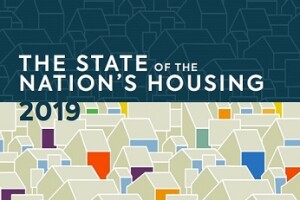The number of renter households fell for the second consecutive year in 2018, but rents are rising at twice the rate of overall inflation.
There’s also a troubling supply issue at the lower end of the market, where the number of units renting for under $800 fell by 1 million in 2017, bringing the total loss from 2011 to 2017 to 4 million, according to The State of the Nation’s Housing report from the Harvard Joint Center for Housing Studies (JCHS).
On the homeownership side, new home construction remains depressed with additions to supply barely keeping pace with the number of new households in the country.
Much of the recent residential building has been high-end luxury apartments and large single-family homes.
“But, there’s also demand for moderate-cost apartments and there’s demand for moderate-cost single-family homes, and we’re not building those,” said Chris Herbert, JCHS managing director.
Part of the reason for that is the cost of producing housing, with labor in short supply and material and land prices going up.
“All those things are adding to the cost of building housing and making it really difficult for builders to build housing in the middle of the market,” Herbert said, adding that localities need to use their land more efficiently, which means increasing density for single-family homes and apartments.



